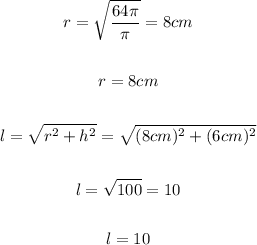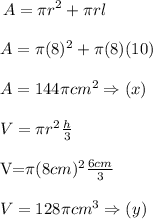Answer: We have to calculate the (i) volume and (ii) the surface area of the cone:

The formula (1) is for the lateral surface of the cone and the formula (2) is for the volume of the cone, the unknowns are determined as follows:

Therefore the volume and the lateral surface area is calculated as follows:

Therefore x and y are the answers.